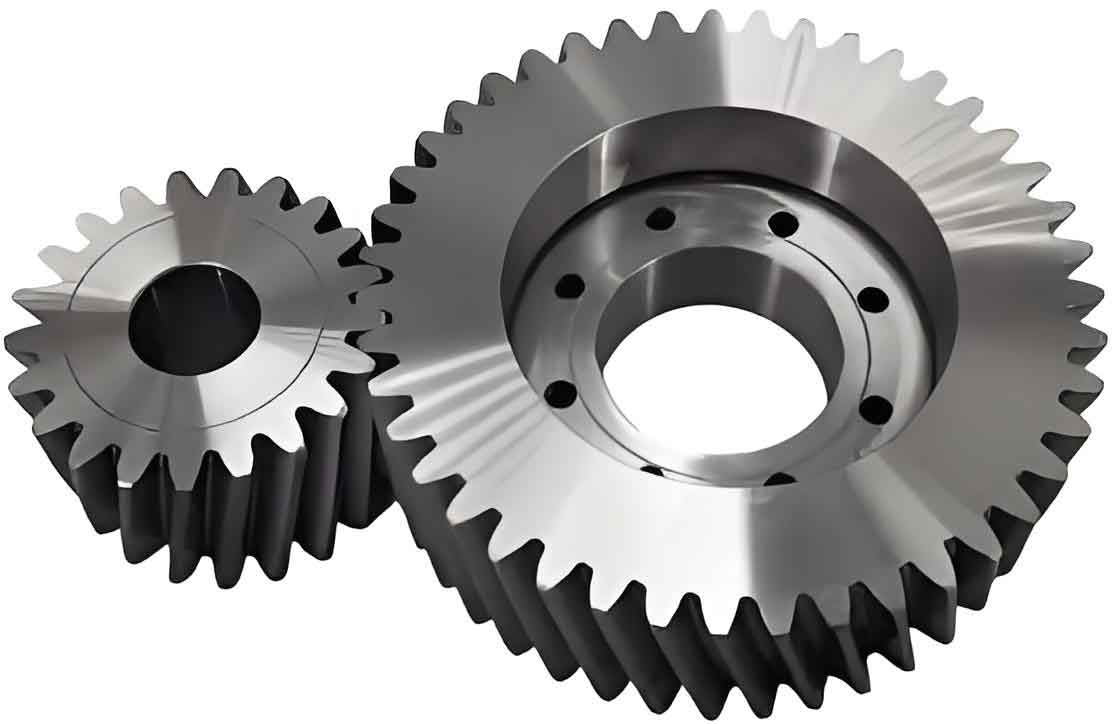Spindle finishing is a critical process for enhancing the surface integrity of cylindrical gears, particularly in achieving isotropic surface textures and improved fatigue resistance. This study investigates the granular interaction mechanisms at the gear-to-abrasive particle interface using Discrete Element Method (DEM) simulations. By analyzing velocity fields, contact forces, and parametric dependencies, we establish a framework for optimizing cylindrical gear finishing processes.

Numerical Modeling and Simulation
The DEM model replicates industrial spindle finishing conditions with the following key parameters:
| Material | Density (kg/m³) | Poisson’s Ratio | Shear Modulus (MPa) |
|---|---|---|---|
| Drum (Steel) | 7,850 | 0.300 | 7,940 |
| Abrasive (Al₂O₃) | 2,675 | 0.360 | 1,260 |
| Gear (40Cr) | 7,870 | 0.277 | 8,080 |
The contact mechanics follow the Hertz-Mindlin model with Archard wear integration:
$$ \Delta h = \frac{KPv}{H}\Delta t $$
where \( \Delta h \) represents wear depth, \( K \) the dimensionless wear coefficient, \( P \) normal pressure, \( v \) relative velocity, and \( H \) material hardness.
Granular Flow Characteristics
For a cylindrical gear with 23 teeth (m=5mm), three distinct flow phases emerge:
| Phase | Duration (% cycle) | Particle Count | Velocity Range (m/s) |
|---|---|---|---|
| Filling | 0-30% | 0→35 | 0.10-0.25 |
| Stable Contact | 30-70% | 35±5 | 0.01-0.05 |
| Discharge | 70-100% | 35→0 | 0.15-0.35 |
The velocity gradient across tooth profiles follows:
$$ v_{rel} = 2\pi n_1\sqrt{r^2\left(1-\frac{n_2}{n_1}\right)^2 + R^2 + 2Rr\left(1-\frac{n_2}{n_1}\right)\cos\theta} $$
where \( n_1 \) and \( n_2 \) denote drum and gear speeds, respectively.
Parametric Sensitivity Analysis
Key process parameters significantly affect cylindrical gear surface interactions:
| Parameter | Range | Contact Force Δ | Velocity Δ |
|---|---|---|---|
| Immersion Depth (mm) | 80→140 | +76% | +4% |
| Rotational Speed (rpm) | 12→30 | +18% | +148% |
Asymmetric loading occurs due to media accumulation:
$$ \frac{F_{upper}}{F_{lower}} = 1.52-1.88 $$
$$ \frac{v_{upper}}{v_{lower}} = 1.35-1.45 $$
Surface Finish Optimization
Experimental validation reveals axial roughness reduction gradients:
| Depth (mm) | Upper Surface ΔRa | Lower Surface ΔRa | Axial Uniformity |
|---|---|---|---|
| 80 | 17% | 36% | 1:2.12 |
| 140 | 62% | 55% | 1:1.13 |
This demonstrates that deeper immersion (140mm) reduces axial disparity by 46% compared to shallow conditions.
Conclusion
For cylindrical gear finishing, our DEM analysis recommends:
1. Prioritize immersion depth adjustments for contact force control
2. Use rotational speed modulation for velocity-sensitive applications
3. Maintain n₁:n₂ = 5:4 ratio for optimal media flow
4. Implement >100mm immersion to minimize axial variance
The established correlations between process parameters and surface outcomes enable predictive optimization of cylindrical gear finishing, particularly for high-precision transmission components requiring uniform surface integrity.
